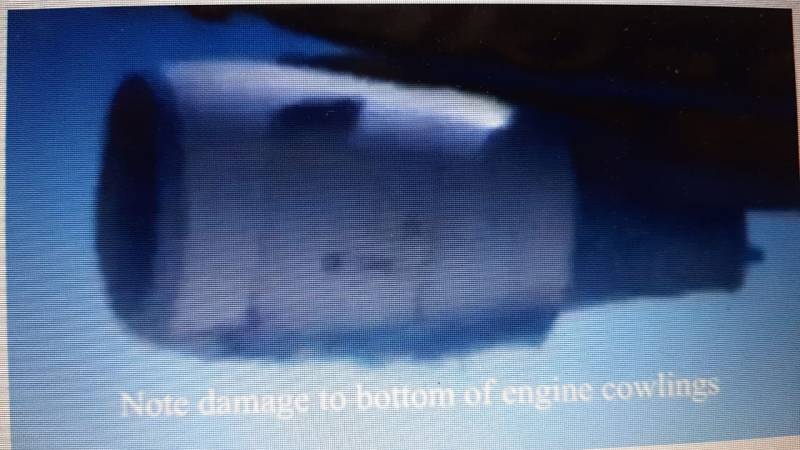Engines touched runway during botched landing attempt

Stay tuned with 24 News HD Android App

The pilot of the ill-fated PIA Airbus twice tried to land at Jinnah International Airport in Karachi but couldn’t because of the stuck landing gears, said 24NewsHD TV on Saturday, citing a report prepared by the Civil Aviation Authority (CAA).
Sources say the runway inspection report mentioned that the plane’s left engine touched the runway at 4,500 feet and the right one at 5,500 feet. However, plane’s belly didn’t touch which enabled the pilot to take off again.
The Jinnah International Airport’s runway is around 10,000 feet long, said the sources, adding that there were marks of the engines on the runway between around 6,000 to 7,000 feet.

Pictures taken of the plane minutes before it crashed indicated that its Ram Air Turbine (RAT) was deployed. White puffs of smoke could also be seen coming from the engine as well as dark marks on both the engines at the undersides. Deployment of the RAT means that both the engines of the plane have been failed or failing.
Images captured by local photographer group, Pakistan’s Planespotters, appear to show both engine cowlings of the A320 having scratch marks implying contact with the ground. Also, the aircraft is pictured with its Ram Air Turbine (RAT) deployed with white smoke trailing from each engine. The RAT is a small turbine that can be manually or automatically deployed as a last resort electric source for the aircraft’s main electrical supply. It is automatically deployed should the main electrical bus bars fail to gain power from either both engine generators, which only have power if the engines are turned on, or from the Auxillary Power Unit (APU), which is normally used during ground operations or as part of a coordinated response to an emergency situation.
Meanwhile, the conversation between the pilot and the airport control tower, available with 24NewsHD TV channel, helps understanding the circumstances in which the crash happened.
Before the first landing attempt, the control tower says the speed and altitude of the plane is higher than the automatic land system. However, the captain replies that he is satisfied with his speed and altitude.
Then the control tower informs him that he could land, while the pilot says, “Yes! We are landing.”
But after a two-minute delay, the sources say, the pilot suddenly contacted the control tower again and said they were going up again and return for landing again.
At this point, the control tower told the pilot that he should reach the altitude of 30,000 feet. However, it had to inform him that the plane was coming down instead of reaching the altitude of 30,000 feet.
“Your plane has reached the altitude of 1,800 feet,” said the control tower, as the pilot replied that they would keep the plane at 2,000 feet.
But soon after that, the pilot said they had lost both the engines, to which the control tower told him that the runway was available for emergency landing.
PK8303 Crisis statement by Airbus
Airbus regrets to confirm that an A320 aircraft operated by Pakistan International Airlines was involved in an accident during flight PK8303 from Lahore to Karachi on May 22, 2020. Initial reports indicate there were 91 passengers and seven crew members on-board. Our thoughts are with all those affected.
At this stage, Airbus has no confirmed information concerning the circumstances of the accident. The aircraft, registration number AP-BLD, Manufacturer Serial Number 2274, first entered service in 2004. It has been in operation with Pakistan International Airlines since 2014. The aircraft had logged around 47,100 flight hours and 25,860 flight cycles as of today. It was powered by CFM56-5B4/P engines.
In line with ICAO annex 13, Airbus is providing full technical assistance to the Bureau d’Enquêtes et d’Analyses of France and to the Pakistani Authorities in charge of the investigation. Technical support is also being provided by Pakistan International Airlines and engine manufacturer CFM.
Further updates will be provided as soon as further consolidated information is available and Airbus is authorized to release it.
